Jordan Brand does it again with a performance Monstar. Not quite perfect, but very, very close. Where do we begin? With the shoes of course…
Seems like just last month I was reviewing the Super.Fly 3 PO (actually, it was two months) and contining to love the Super.Fly line. I had already seen the J-Zoom on the Super.Fly 4 in pics but couldn’t imagine how it improved over a normal unlocked unit. The foam backed upper looked to be like the CP3.VIII AE, which was a great fitting upper. The colorway was crazy. What was there not to like? Well, I guess, if I must, get to the court time…
MATERIALS – Foam-backed mesh in certain areas; in other areas, simply mesh with a little fuse for strength. I loved the upper, especially compared to the SF3. Where the 3 was super-stiff fuse/synthetic, the SF4 is completely flexible and broken in straight from the box. The foam backing helps with comfort and fit and does it well – this is the best fitting Super.Fly in the line. The fuse areas around the lace holes keep Jordan Brand from dealing with ripped-lace-hole returns. From the box on first wear I could bend and twist the upper like a runner, making me happy for my feet.
I’ll get more in detail on the outsole shortly, but for materials, we get a soft, almost translucent rubber compound that is sticky and grippy on first wear. More mesh on the tongue for ventilation and we are on our way.
FIT – Again, best fitting Super.Fly in the series. The length in my normal 10.5 leaves me about a fingers width between my big toe and the end of the shoe which I found very necessary. I like a little space so if I get any slip in the shoe I don’t immediately bang into the box hard. Also, after a LONG run like my last in these (11 games of full court to 12: I went 8-3) my feet tend to swell, so a little room is perfect. The forefoot is cut narrower than either of last year’s models but normal width should be fine – the laces allow for loosening up. I am a D width and felt perfect.
The midfoot FitStraps really wrap that area of the shoe into the foot, not just pulling the sides up and around but pulling the foot into the midsole. I didn’t think one strap would do much, since the Jordan XX9 had them from toe to ankle, but I was shocked, SHOCKED I say, to feel how much support I received from those two little lines. The shoe is a little higher cut around the ankle and heel and with the use of Pro Combat in the Achilles notch, heel slip is a distant memory. This was actually a shoe that I didn’t lace up as tight as possible because I felt locked in at casual tightness.
SUPPORT/STABILITY – Jordan tried and true – the FlightSpeed plate is the new FlightPlate from the last two years, and that is a good thing. Along with distributing the responsive bounce from Unlocked Zoom across the foot, the Plate/Speed also gives the shoe its torsional support. For those new to this, torsional support keeps the shoe from bending in the wrong places but does allow the shoe to bend in the right ones. In the middle, you don’t want the shoe to bend down. With the segregated outsoles (forefoot and heel are two different pieces) you get some opposite-bending possibilities. Plate/Speed takes that option away by being stiff and holding tight. It is not as stiff as a carbon fiber plate, but CF tended to be too stiff and caused foot fatigue from working harder to create good bend. The TPU plate in the Super.Fly 4 makes transition smooth and not slappy at all – another feature of a softer plate.
There is no outrigger to be found in the forefoot, so you have to depend on the fit and low ride to keep you stable up front. Again, not a bad thing – some outriggers leave the forefoot feeling wide and slow. If the shoe is lower in profile, not a problem.
The heel support is provided by an external heel counter that is not too hard, not too soft – just right. Most shoes opt for a hard plastic heel counter to keep the heel stable and not allow roll. The SF4 is more of the softer PU and does allow for some side-to-side bending, but coupled with the higher cut and lacing to the top the heel is locked into place.
I will say the shoe felt narrow and “tippy” on initial try on. What that means, as I explained in the video, is a shoe tends to have a “point of no return” where an angle allows the shoe to rollover and not hold up. Some shoes, like the Kobe VIII and Rose 1 tend to have almost no tip. Some others, like the Nike Air More Uptempo and Nike Ultraflight, roll with little or no effort. Once on court, the Super.Fly 4’s “tippy” went away, and quickly, due to the low ride and great fit.
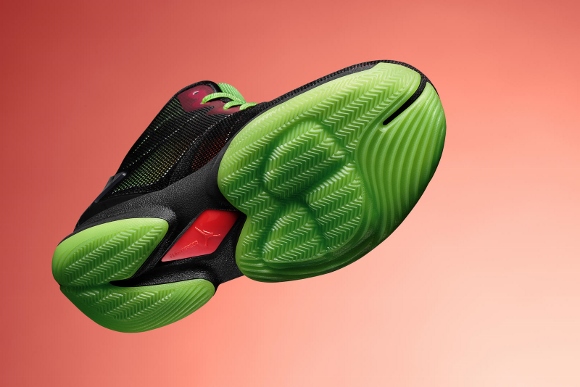 TRACTION – Squeaky and tight, even just walking around. I even got squeaks on my concrete driveway. More due to the materials than just pattern, this shoe was on when it counted. Those lovely 24 Hour Fitness courts are nasty by Wednesday (Monday and Tuesday ain’t great either) but the Super.Fly 4 put in work. I really liked the wavy forefoot pattern under the toes. not often I notice a difference in a pattern, but on toe off I could tell it wasn’t herringbone but a smoother transition. The segregation channels in the heel and forefoot also let the shoe dig into the court and hold on takeoffs, something I noticed when making cuts and coming through the lane. The lower I got, the better the shoe felt on those moves. I do NOT think the outdoor courts will love this shoe – the rubber is soft and pliable and the pattern is shallow. Look elsewhere for an outdoor shoe – which is a shame, because the Super.Fly 2 and 3 were great outdoors. I could be wrong, but with bottom – loaded Zoom the last thing you want is the outsole wearing through.
TRACTION – Squeaky and tight, even just walking around. I even got squeaks on my concrete driveway. More due to the materials than just pattern, this shoe was on when it counted. Those lovely 24 Hour Fitness courts are nasty by Wednesday (Monday and Tuesday ain’t great either) but the Super.Fly 4 put in work. I really liked the wavy forefoot pattern under the toes. not often I notice a difference in a pattern, but on toe off I could tell it wasn’t herringbone but a smoother transition. The segregation channels in the heel and forefoot also let the shoe dig into the court and hold on takeoffs, something I noticed when making cuts and coming through the lane. The lower I got, the better the shoe felt on those moves. I do NOT think the outdoor courts will love this shoe – the rubber is soft and pliable and the pattern is shallow. Look elsewhere for an outdoor shoe – which is a shame, because the Super.Fly 2 and 3 were great outdoors. I could be wrong, but with bottom – loaded Zoom the last thing you want is the outsole wearing through.
CUSHIONING – Told you all we would get here. Cushioning is, well… there is Zoom. And Foam. And the Zoom is Unlocked J Zoom. And the foam is foamy. Here is the deal – the foam carrier and FlightSpeed system take away any cushioning response from day 1 to about day 3. Not bad, just takes a little breaking in. After that, the Super.Fly 4 is more Jordan XX9 than XX8. Again, not bad – the XX9 got the job done, it just didn’t bounce like the XX8. The XX9 also didn’t explode like the XX8, so there is your trade. The unit sits almost even with the rest of the outsole instead of protruding so the unstable feel found in first generation Unlocked is gone. Once broken in, the SF4 rides low and tight and I felt extremely quick on my toes and running. The response time is great – no lagging feel delay in reaction. It just isn’t special, which is more on me than Jordan. I have been so impressed with JB innovation and performance the last three years that I fully expect EVERY shoe to have a “wow” factor, so when they don’t I am like a kid with a broken toy. The J Zoom is great for guards and wings and once broken in is lovely.
The heel is foam again (phylon) and again dos the job of absorbing impact and bouncing back. I never felt lessened by a lack of Air, but there was just protection, no performance, in the heel. With the other basketball companies making top-rated foams now it may be time for Nike to rethink Lunar and bring a new innovation to the table.
OVERALL – Hated to end on a negative note, because really, the Jordan Super.Fly 4 is one of my rotation shoes at the moment. The combination of great fit, materials, low-riding court feel, and responsive cushioning make this an almost great shoe. The phrase “sum being greater than the parts” comes to mind – add the shoe up and you have an almost, borderline great shoe (very good for now). Again, I have said this for years, Jordan Brand is putting out killer performance product, using new technologies and materials. J Zoom? Unlocked? Woven uppers? Push it, and keep pushing it. The real problem is the bar is set so high that anything less than cutting edge feels like a letdown. However, the Super.Fly 4 is anything but. Only get this shoe if you are serious about ball – it has all the elements a player should look for. And you can help save the Earth from that pesky Martian and his pet Gossamer.

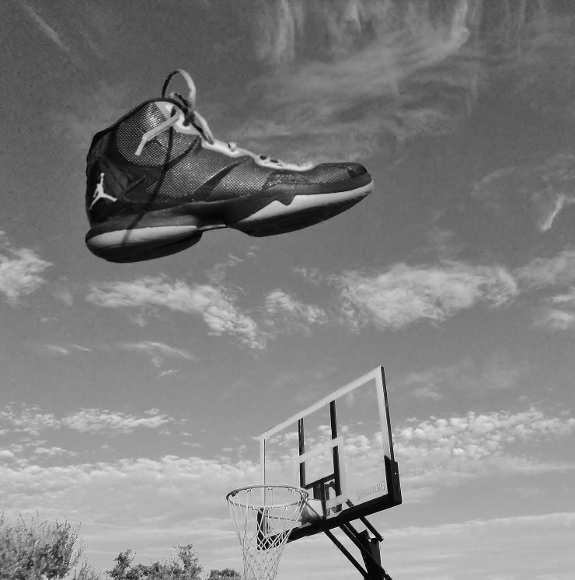
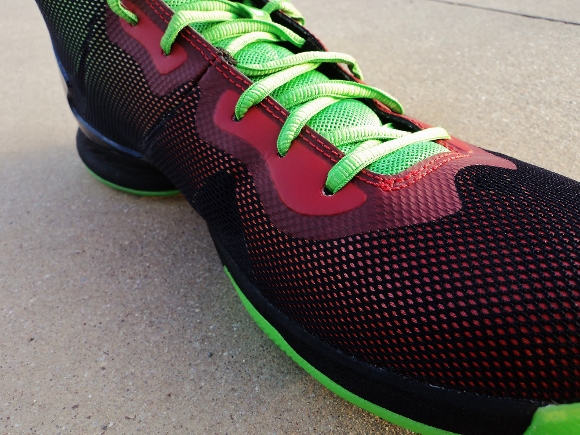
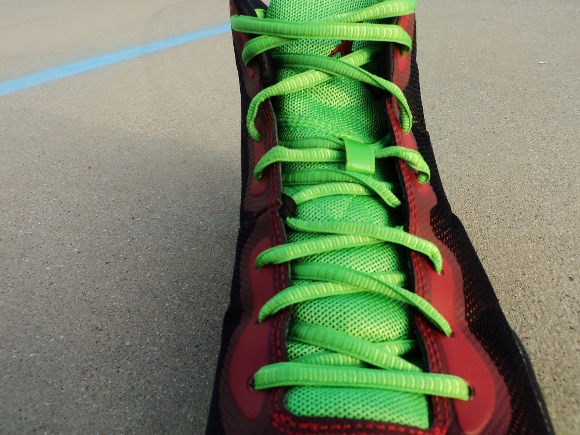
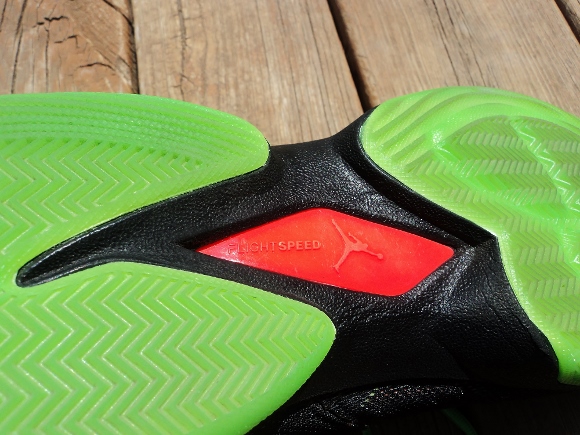
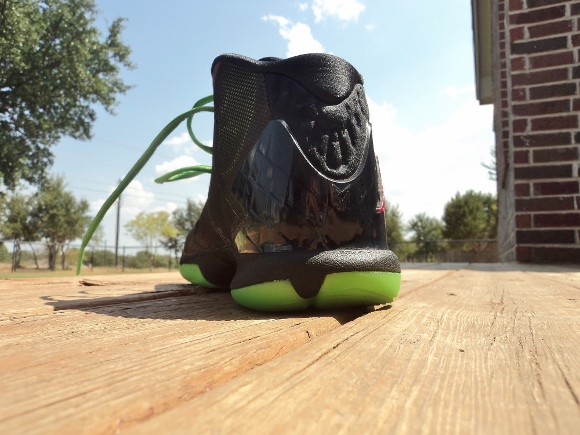
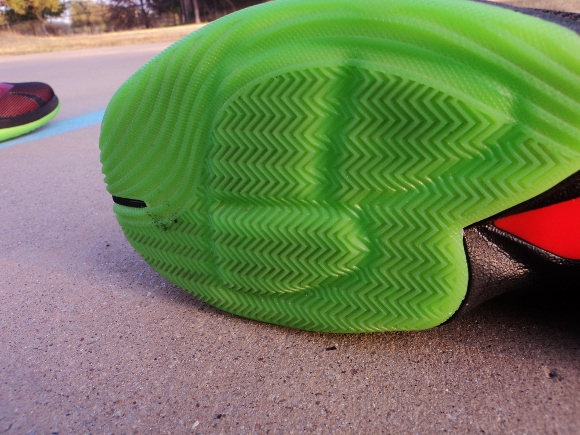
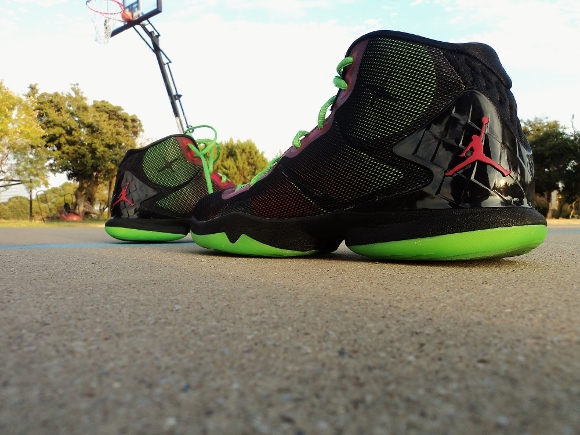
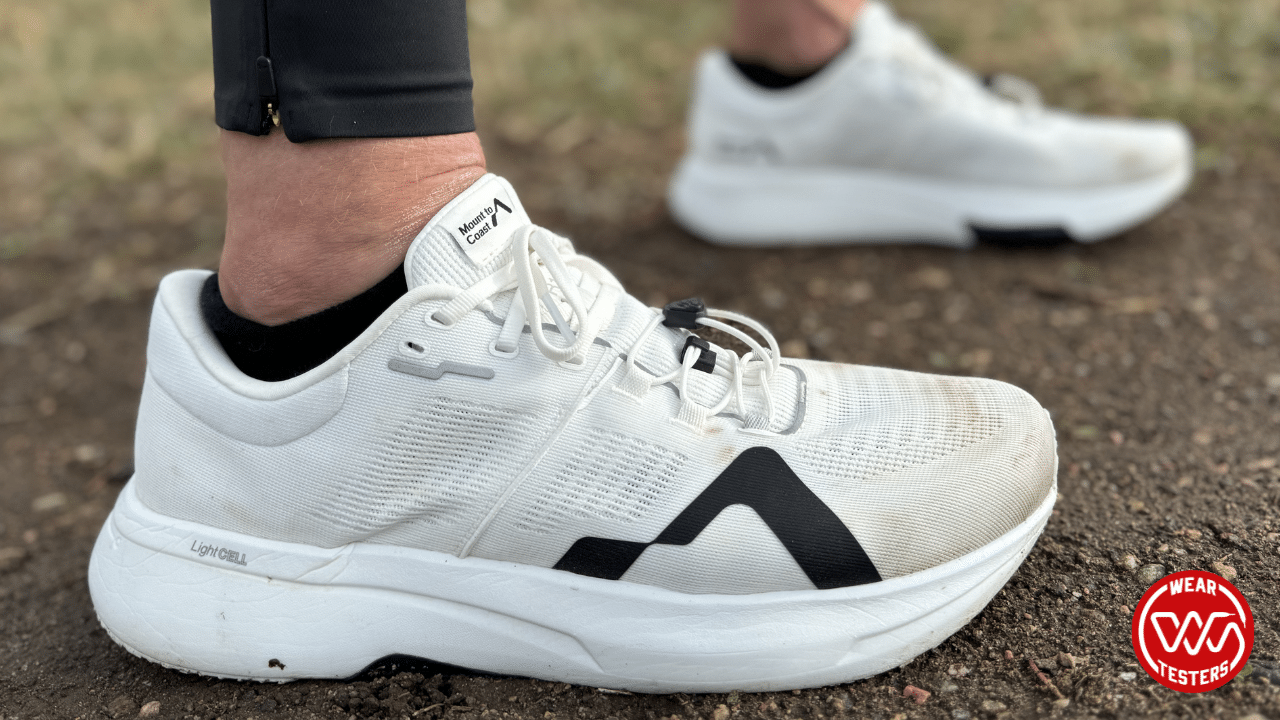
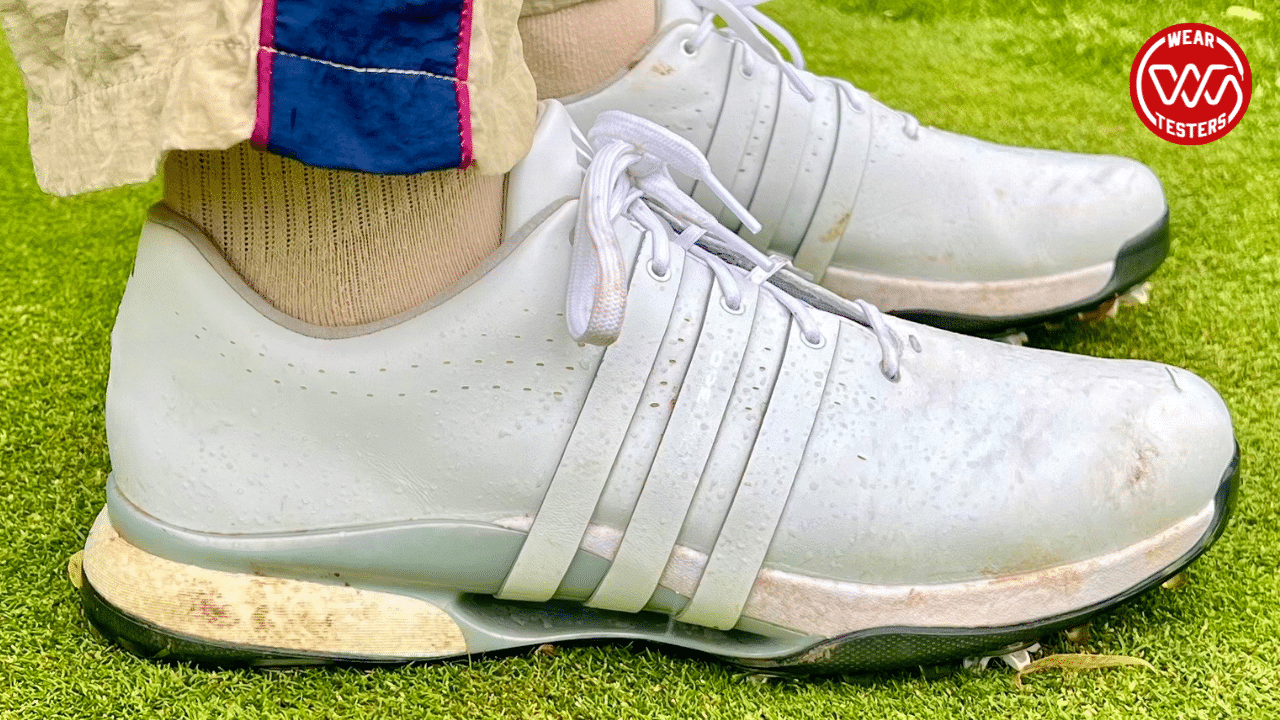
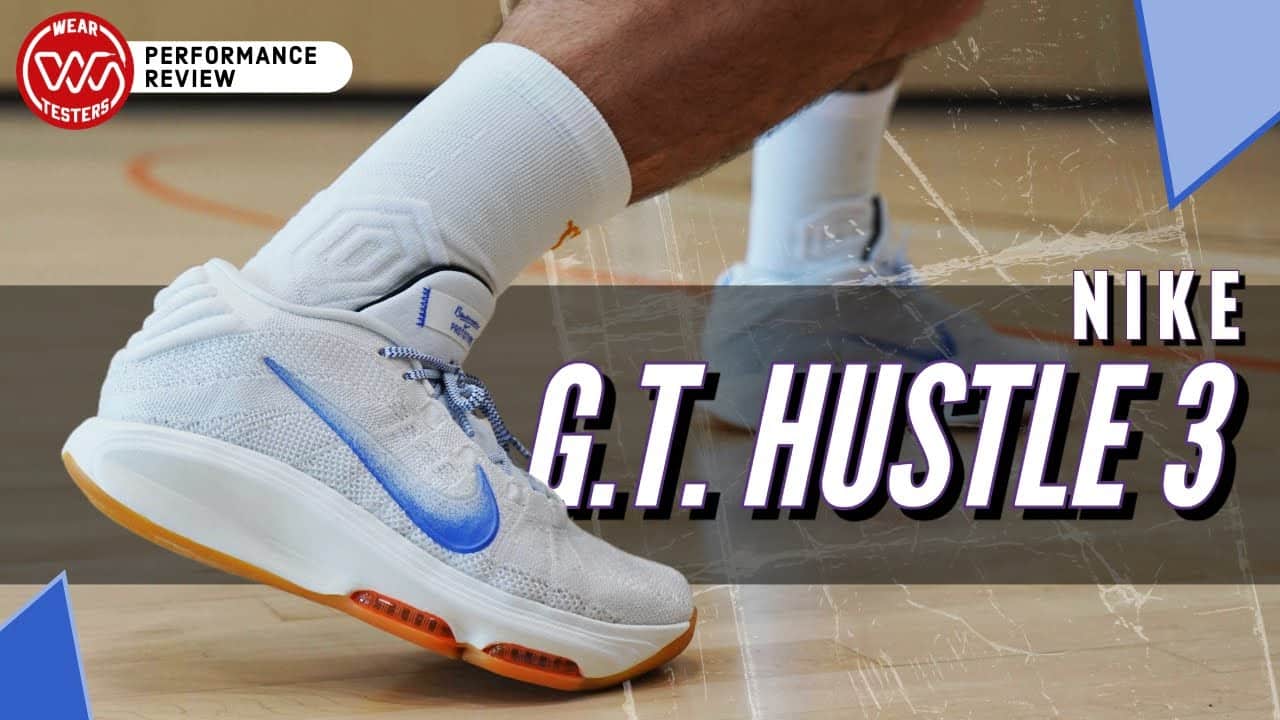
Thank you duke. I have been enlightened once again. My pair is coming in today and it sounds to be a worthy replacement for my xx8.
Great review Duke, so happy to see you doing your thing here after following you for so long (Niketalk, SoleCollector, Kicksology, etc lol). The most interesting part of this shoe is how you mention it is stable without the outrigger. We’ve had many discussions before about stability and we always saw eye-to-eye about how outriggers for preventing ankle roll.
I currently play in the Kobe 9 EM but I had to stop because I guess Lunarlon is too soft for me (I’m 5’11, weigh 200 lbs). From walking/standing it feels like you’re on a couch, but after playing I am always sore, back pain, toe bruising, etc.
Long story short, I’ve switched BACK to my Under Armor Black Ice Mid to start playing in again. I stopped playing in them because I rolled my ankle in them before and I always blamed it on lack of an outrigger, when in reality it was probably because of how high I was. Micro G keeps those shoes low, and although they’re heavier, I will get used to playing in those again.
Anyways, not to get too far outside of the review subject (which has already happened lol), but thanks for instilling confidence in not only purchasing this shoe, but also being confident in playing in shoes even without an outrigger.
Thanks again for your hard work and glad you survived the sharks lol
I agree on the Lunar – not a fan at all but I seem to be in the minority. Just too soft for my game.
Thanks for following so long. My NT reviews seem FOREVER ago. Met some great people trough CK, and evolved to here, but that was a snowball to hell. I have away my Black Ice to my nephew a couple years ago but they were still in great shape and played perfect.
great review, man, i really get a feel for the kind of game that you play and the kind of rigors you put your shoes through when you’re testing them, i really appreciate that…i feel like i can count on your reviews because i’m also somebody who is on his toes from start to finish, playing hard on both sides of the ball (i run the point usually, though i can also play on the wings) thanks for writing this one
I just wish I was still in my 20’s so I could really break out. Sorry I get a little wordy – I just love this stuff. Thanks for the words.
Hey, I tweeted u about this. if i’m a guard in need of some directional change shoes but also good shooting cushions, should I get the cp3 9 or super.fly 4’s? The nike person said to get the cp3 since they both have good cushion and cp3’s grip pattern is for change of direction, but it seems to me on ur reviews that cp3 9’s cushion sux for shooting, so can you help me out?
ps can u email me when u reply.
Thanks
Duke.
Thank you very another great review. I had no interest in these shoes at all but are you’re detailed review I will see about a pair once they drop down in price. I’m glad to see the cushion gets better over time.
I wanted to ask, when you mentioned the Force Vector review will it be for the mesh or leather?
Not sure on the Vectors yet. They just said they arr coming – but I did ask for leathers. I’m a sucker for leather.
Trying to get these cheap resale on eBay…
Good performance review from Duke. The SF4 seems to be a bit of a let down when compared to the SF3 in terms of bounce. Traction and flexibility is an upgrade. I hope the make a Riverwalk edition(xdr) for these.
Nate2, balance wouldn’t be an issue at all, due to the feel of the foot feeling lower to the ground. You have more steady natural wave foot motion. Honestly I believe sf.4 > sf.3
I would add more, but I’m not at liberty to talk about any next/future models.
thank you very much for your review Duke. personally, I would say that these are the better shoes coming from the SF series. I had some several issues with the previous iterations of the SF. these seem to be close to perfection. what I liked about them is that they are more level, better transition, bouncy yet soft, durable (less tendency to pop unlike the previous unlocked zooms, balance volumed zoom bag and possibly much better and durable cage for it. the only minor complaint about it is that the materials could have been better or have other style maybe some leather or flyknit.
I agree – even though I thought the 3 had better cushion, the 4 is right there and the upgrade in materials and fit pushes this over the top.
Great review Duke! Just wondering, will you be reviewing the micro g torch 4?
Probably not on the Torch 4. Planning on the CF Drive 2, Lightning, and Curry 2 so that may be UA overload.
I actually would like to see the Torch 4 reviewed by someone here at Weartesters (doesn’t have to be you, Duke).
There hasn’t been a review here of the Torch series since the Torch 1s by Nightwing (that was THE review that made me want to try out an Under Armour shoe and Micro G cushioning), but that is OK since they all seemed to use the same tooling up to the Torch 3s. I guess it still could have been worth reviewing the 2s and 3s to see how their new uppers performed, but with the same tooling not sure how much of a difference the different uppers could have made?
The Torch 4s have a different tooling though, so that is why I’d like to see them reviewed.
That is because the Torch 1, 2 and 3 all used the same tooling, though having owned all three I think they were each unique in terms of their performance. If you have questions, let me know. The 4 uses different tooling but I think with higher profile UA releases, it may get lost in the shuffle. Frankly I am surprised they are reviewing the Lightning 2. In my opinion the Torch 2 is an incredible shoe, despite a lack of ventilation. Best ankle support I have *ever* felt on *any* shoe, and that same great Micro G cushioning from the first model.
Duke did you like these better than the melo m11?
Nah – the materials in the M11, especially the Christmas colorway, put it over. But I love leather. Performance wise? Very even.
Thanks duke.
Nicety, the track on pattern reminds me of the kelp M9 which I can run a whole clergy on that shoe is so dope and unstopale
Kelp. F iPhone tNslation, MELO M9
Nicety
the traction pattern reminds me of the Melo M9 which I can run a whole clergy in that shoe – unstoppable
What’s the name of that shoe reviewer you mention in the stability section?
Schwollo
I agree Duke4005
Of course I’ve product tested these probably about last year. My thing was the fit b/c it was very narrow for me(probably b/c it’s a test pair), But also wish there was some type of shock absorption innovation on the heel itself. Maybe a top loaded base Zoom(like used in LBX12). I had alternate issues with the shoe itself but thats why I product tested. It seems like all those issues were resolved, and it also seemed lighter then the test pair I had also, which is a plus. The low to the ground ride was amazing, and the traction that it utilized was pretty stellar. Overall, the shoe played better the long you played in it. The foam took time to mold to foot(almost like posite, but more forgiving). But Great write up as always buddy.
Nice review overall, one thing that has me confused is your account of the heel cushioning. It’s just phylon, like last year’s model (SF3, M11, XX9) or is there something more? No Lunar or Zoom, correct?
I will definitely get these at the usual half price reduction. SF series has been great.
Right – foam only.
Thanks. I could have used a little more heel cushion on the SF3, though it compensated by pushing you toward the forefoot somewhat. I hope these have a little thicker or at least denser foam in the heel, even if it’s just phylon. Cheers.
Super.Fly 4s or the XX9? I know the XX9 is more expensive but does it worth the price difference? Planning to buy a performance pair.
Keith – containment on SF4 is better but overall really similar. Cushioning and lockdown is same, traction is close. XX9 are pretty cheap now on Eastbay with 20% off so price is pretty even also. Honestly? Pick a color way you like and go. They are that even.
Hi duke, I appreciate d intelligent review, way much better than d others (I’ll stop there).. & I woke up @2am just 2 watch all d reviews I can get on sf4, aj29, kobe9 em, and clutch drive 1. Im shopping 4 a new basketball shoes 4 my fiancé. Seems like d fs4 is so much more than what meets d eye. Also, I find it interesting from d comments above that others are also deciding between d air jordan 29 and sf4 – so I must be on d right path when it comes to fit and stability.. I decieed to go for this pair.. just deciding on d color. Im a fan of marvin but others who don’t know the association to the character could think this is too Christmas. There’s another pair in my local store in gray/black. Personally I think both colors are dope! But from a guy’s perspective, what do u think? Fiance’s an engineer who plays ball on weekends and whenever he can. Thanks!
If I normally wear size 10 men regular shoes and size 10.5 basketball shoes which size should I pick for this shoe. Is the size true to regular shoes?
umm this or the d.rose 6? also is it true that the rose 6 is too bulky(makes your foot look weird)
This or XX9s ??